Everyone has to help out when you are in the field. There is no time for shirking from duty. There is much work to be done. You quickly sort out amongst your teammates what role you will take on for the team. Today's journal is all about my contribution, though small, to our threesome.
 Ice core with temp probe, digital readout and drill next to the core. Ruler is at the top of the core for measuring 10cm sections.
Ice core with temp probe, digital readout and drill next to the core. Ruler is at the top of the core for measuring 10cm sections.
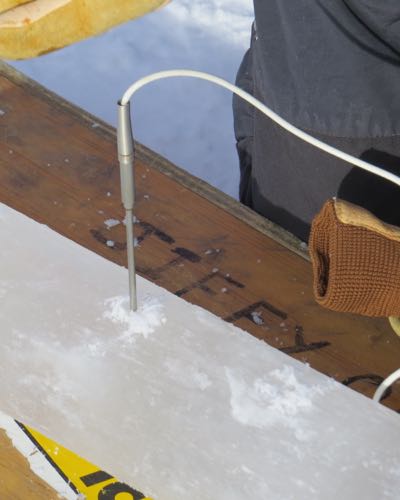 Temperatures are taken within each 10cm section of the ice core. One of my duties on the ice – drill into the core and take temps!
Temperatures are taken within each 10cm section of the ice core. One of my duties on the ice – drill into the core and take temps!
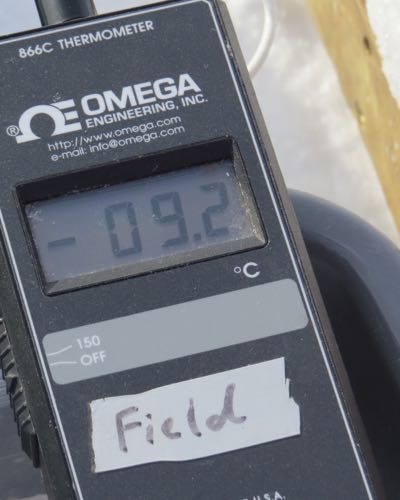 Digital read-out for the temperature probe. One of our pieces towards the top was -9.2˚C. The temps get warmer as you go down. Why?
Digital read-out for the temperature probe. One of our pieces towards the top was -9.2˚C. The temps get warmer as you go down. Why?
I think the division of labor among teams happens quite naturally in most cases. For example, Yongli, an athlete, possessing a tall build, was tasked with coring and removing ice cores as well as collecting samples of sea water and ice crystals for his eventual analysis in the lab. This task was fitting due to his physical stature. Hongjie, who is much shorter but a hard worker, became the sled master, tying down loads, helping with the changing of the instrumentation and ice coring, sawing ice cores and leading our threesome. I was often the secretarial component of the group, writing measurements, marking bags, taking temperature measurements and the like. I tried to ensure all of our "i's" were dotted and "t's" crossed, such as watching out for mistakes that inevitably happen when you are working fast and in the cold. I feel particularly competent in these tasks as it often resembled my classroom work.
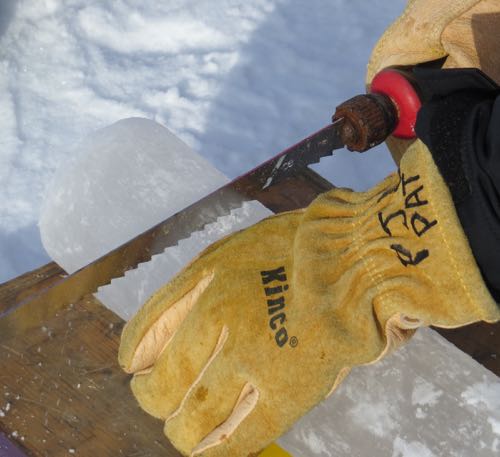 Dr. P. Langhorne is hand sawing the 10cm sections. I took the sections and placed them in the buckets and labeled them. She showed us how to take the temps of each piece too.
Dr. P. Langhorne is hand sawing the 10cm sections. I took the sections and placed them in the buckets and labeled them. She showed us how to take the temps of each piece too.
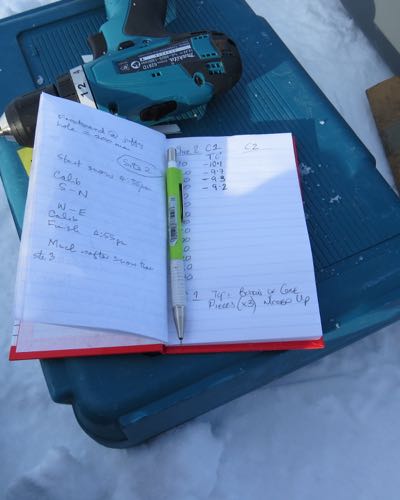 The Kiwi's data notebook for temp. I was lucky enough to do the recording.
The Kiwi's data notebook for temp. I was lucky enough to do the recording.
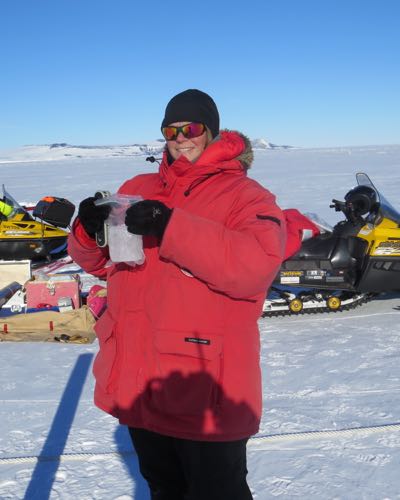 This was another of my jobs in the field. Putting the ice cores into bags, labeling and sealing the bags. It took us several tries to find the best method. Here, a stapler is in hand!
This was another of my jobs in the field. Putting the ice cores into bags, labeling and sealing the bags. It took us several tries to find the best method. Here, a stapler is in hand!
You use your strengths out here to complement each other to get the work done. It's not that you couldn't try something else, it just seems that you gravitate to what you are most confident and competent at doing. I was not strong enough to pull ice cores and have little to no knowledge of knot tying, but, thanks to my classroom experience, am accustomed to checking on how experiments are progressing, heading off mistakes in the lab and writing up lab collection data charts.
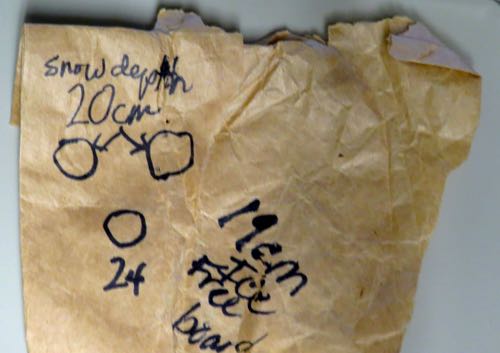 First set of data on a piece of lunch bag… not the best way to collect measurements in my mind! Must reconcile this.
First set of data on a piece of lunch bag… not the best way to collect measurements in my mind! Must reconcile this.
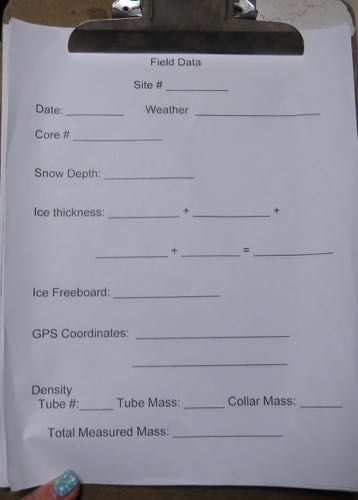 A field data collection sheet. Our first day out, it was clear we needed something to put our data on. No worries, I'm a teacher, I got that covered! So much better than the section of lunch bag used from our test site!
A field data collection sheet. Our first day out, it was clear we needed something to put our data on. No worries, I'm a teacher, I got that covered! So much better than the section of lunch bag used from our test site!
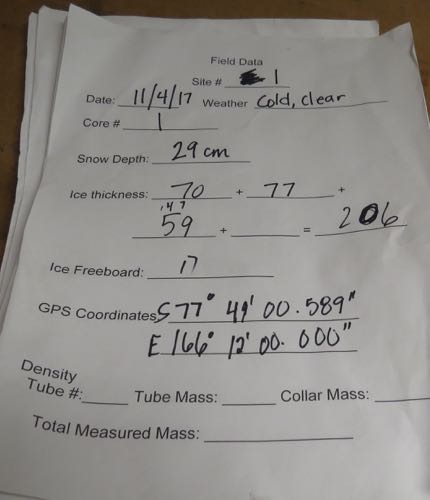 Our data sheet in use. Needed to be large so when your fingers are numb, you can still manage to get the numbers where they belong!
Our data sheet in use. Needed to be large so when your fingers are numb, you can still manage to get the numbers where they belong!
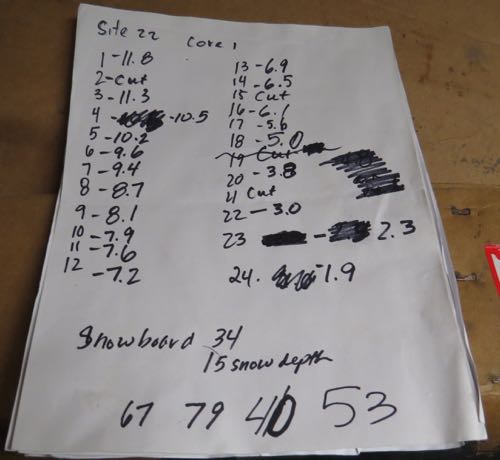 A look at the temp measurements from our last collection site. I would have made a sheet earlier if I had known we were going to collect this.
A look at the temp measurements from our last collection site. I would have made a sheet earlier if I had known we were going to collect this.
I attempted the coring, but, would not have wanted and certainly wouldn't have been efficient at doing so. My smaller hands allowed me to better manipulate bags and twist ties for ice cores.
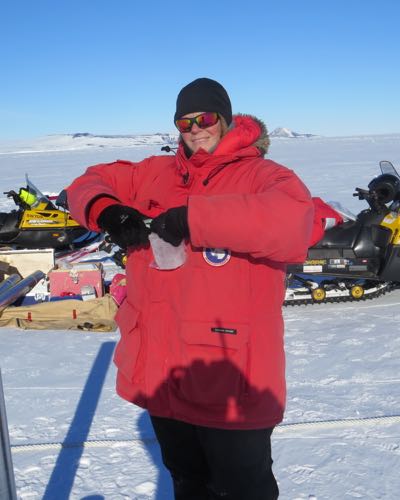 Folding and stapling the bags, making sure the cores go into the bag in the right direction and ensuring the correct piece is in the corresponding bag is a stressful job! I look really stressed right?
Folding and stapling the bags, making sure the cores go into the bag in the right direction and ensuring the correct piece is in the corresponding bag is a stressful job! I look really stressed right?
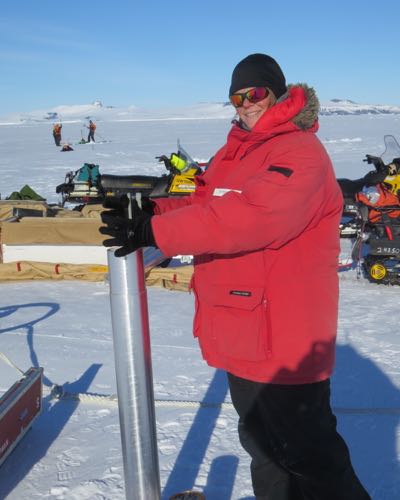 Easiest job I had was loading the cores into the tubes. I only had to make sure they went in numerical order!
Easiest job I had was loading the cores into the tubes. I only had to make sure they went in numerical order!
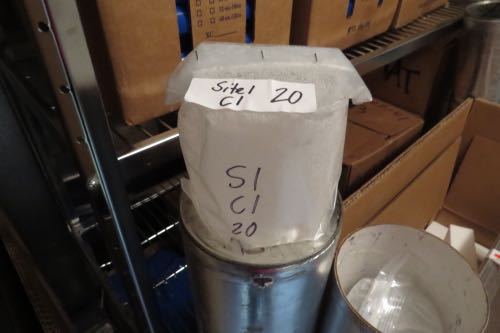 A labeling system was devised. We discovered the bags were more easily labeled in the office and the stickers were good, but in the cold sometimes fell off.
A labeling system was devised. We discovered the bags were more easily labeled in the office and the stickers were good, but in the cold sometimes fell off.
All the jobs needed to get done, no matter how trivial they seemed. Some jobs, while looking easy, were quickly noted by all members to be difficult. There really wasn't an easy task in the field due to the environment. Wearing lots of gear, mittens and gloves, it seems everything takes twice as long. We did it though. We took 15 cores in total. We took samples at eight sights over the course of five days. The days were long and weather, well, it's Antarctica. Enough said. Our field work complete, we now will step into the lab and work on the analysis side. I thought things would warm-up for this part, but, it turns out we are working in the cold room. So much for being warm!
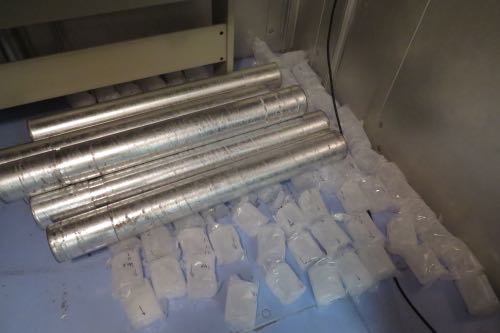 Cold room with ice cores and tubes. How cold is the cold room… look below!
Cold room with ice cores and tubes. How cold is the cold room… look below!
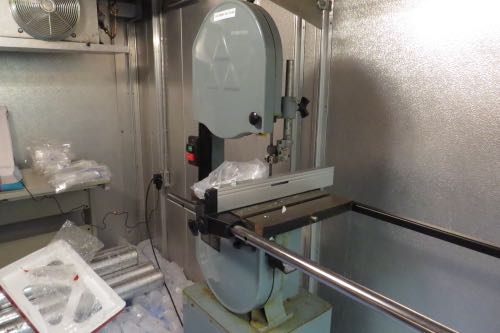 This is the band saw we will use to cut the ice cores and yes, that is in the cold room. Going to be one frozen teacher when I get done sawing!
This is the band saw we will use to cut the ice cores and yes, that is in the cold room. Going to be one frozen teacher when I get done sawing!
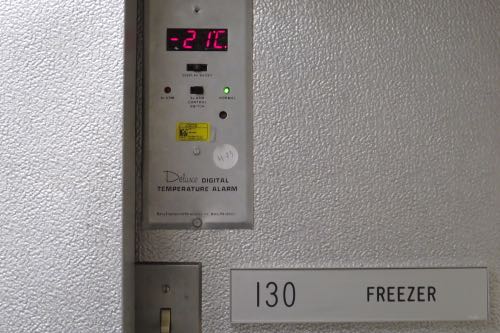 Cold room temp is a freezy -21˚C. Brr. That's colder than the field.
Cold room temp is a freezy -21˚C. Brr. That's colder than the field.
Perhaps the thought of these sweet flat Loraxes from Emma in 1st grade and Olivia, an APES student will keep me warm when I head into the frosty freezer! Here's hoping!
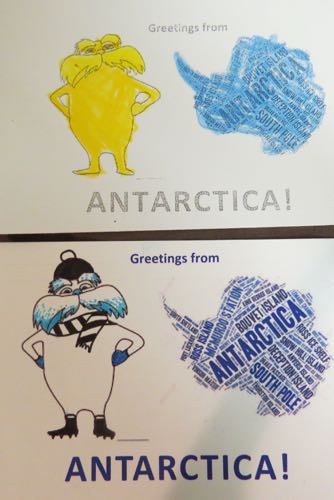 Flat Lorax postcards for Emma in 1st grade and Olivia in APES. Love this freezy cold Lorax. Perfect for where I was today… the cold room!
Flat Lorax postcards for Emma in 1st grade and Olivia in APES. Love this freezy cold Lorax. Perfect for where I was today… the cold room!

Add new comment